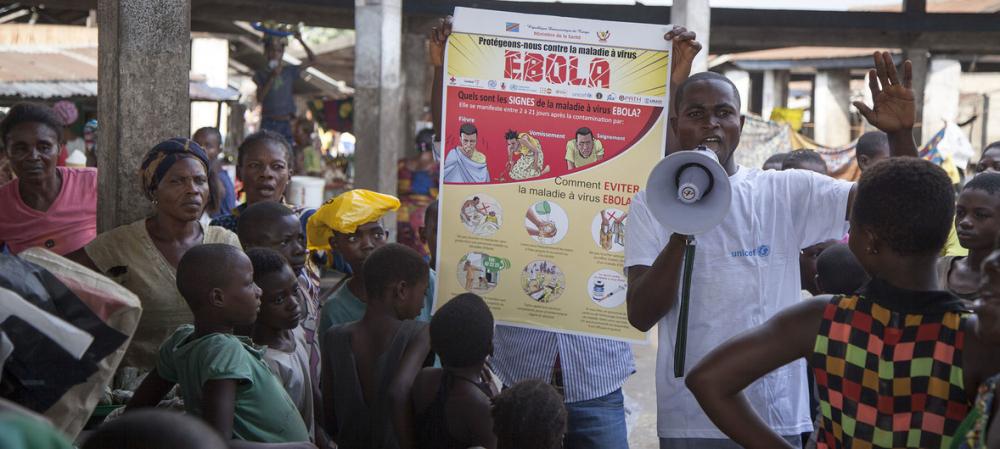Just Earth News | @justearthnews | 27 Jun 2018, 09:38 am Print

New York: Almost two months after the start of the latest Ebola outbreak in the Democratic Republic of Congo (DRC), United Nations health experts announced on Tuesday that the deadly disease has “largely been contained”.
A total of 55 cases of Ebola have been recorded during the current outbreak of the often-deadly viral infection and 28 people have died, according to the World Health Organization (WHO).
Ebola is endemic in DRC and has been identified there nine times, since 1976. Before the current outbreak in Equateur Province, the most recent episode of the disease was in 2017, in northern Likati province. Four people died and four survived, according to WHO.
Spokesperson Tarik Jasarevic said that the development was an “important step” but “it is not the end”.
Ahead of the WHO announcement, there were fears that the disease might continue its spread from rural north-western DRC, along the key Congo River transport route, to the capital Kinshasa, which is home to 10 million people; and also spread to neighbouring countries.“We are cautiously confident regarding the situation and know that a continued aggressive response is required,” he said, adding that “experience has shown us that it only takes one case to set off a fast-moving outbreak.”
Those concerns were based on the grim toll and progress of the Ebola epidemic in West Africa between 2013 and 2016, which killed more than 11,000 people in Guinea, Liberia and Sierra Leone.
To counter the threat from the current outbreak – and making use of a new vaccine - the UN agency and Doctors Without Frontiers (MSF) quickly coordinated over an inoculation programme that began in the DRC city of Mbandaka, where around one million people live.
This was followed by another round of preventive vaccination in and around the town of Bikoro to the south, where the initial Ebola victims were identified.
According to WHO, the last confirmed case of Ebola in DRC was on 6 June.
Since then, all probable and suspect cases have been declared negative.
A key tactic used to counter the spread of the haemorrhagic disease has been contact-tracing.
During this current episode, WHO and MSF have traced contacts of those who are suspected of having the disease, administering more than 3,200 vaccinations.
The last 161 people to have come into contact with suspected Ebola virus carriers will finish their mandatory follow-up period on 27 June, at which point they will be declared virus-free, WHO says.
Meanwhile, on the ground in DRC, health teams are following as many as 20 suspect cases a day, said Jasarevic: “We need to keep the work going in DRC to make sure that all suspect cases are being looked for and make sure that there are no new cases.”
UNICEF/Mark Naftalin
- From thinning to thriving? New hair loss treatment is showing promising results in trials
- Surprising coffee link: Daily cups may slow ageing in severe mental illness
- Malaria crisis looms as WHO reveals explosive rise in drug resistance
- Study shows nanoplastics from bottles are not just pollution—They may be harming you from within
- Are birth control pills affecting your mental health? New study raises red flags



-1763561110.jpg)


